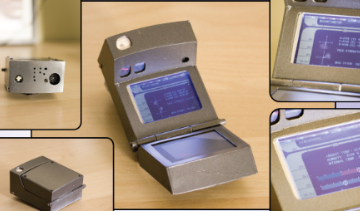
Canadian scientist open sources science tricorder designs
By Design Engineering Staff
General product development sensors tricorderIf the iPad 3 isn’t quite geek chic enough for you, McMaster PhD grad Peter Jansen's Trekky gadget has you covered.
As anyone who grew up a fan of the original Star Trek knows, the first thing you do after transporting to an alien planet is pull out your trusty science tricorder and scan for threats, atmospheric conditions and any “friendly”, green-skinned inhabitants in the immediate vicinity.
Rather than simply dreaming about owning a tricorder, Toronto resident Peter Jansen decided to build one while finishing his PhD in cognitive science at McMaster University. In fact, Jansen has built two of the devices and is offering up the electronic schematics, parts list and source code behind them on his web site.
 Approximately the same size and shape as the Star Trek original, Jansen’s Science Tricorder Mark 1 packs eleven different modes including temperature and humidity; atmospheric pressure; and magnetic field sensors as well as an IR thermometer, ultrasonic distance sensor, inertial measurement unit and a GPS receiver.
Approximately the same size and shape as the Star Trek original, Jansen’s Science Tricorder Mark 1 packs eleven different modes including temperature and humidity; atmospheric pressure; and magnetic field sensors as well as an IR thermometer, ultrasonic distance sensor, inertial measurement unit and a GPS receiver.
And, in case your away mission should require it, the Mark 1 also features a colorimeter, a light-to-frequency converter and a linear sensor array complete with polarization filters. The results of a preliminary scan are displayed on a TFT screen or can be saved to the integrated SD card reader.
Jansen’s Tricorder Mark 2 is the “Next Generation” version. While it incorporates the same sensors as the Mark 1, it features a bare-bones Linux environment, a more powerful ARM9 processor; a rechargeable lithium polymer battery pack; and two color OLED touch-screens.
In addition to the Tricorders, Jansen’s site also offers his plans for an open source selective laser sintering (SLS) 3D printer and a 3D-printable laser cutter.
www.tricorderproject.org
